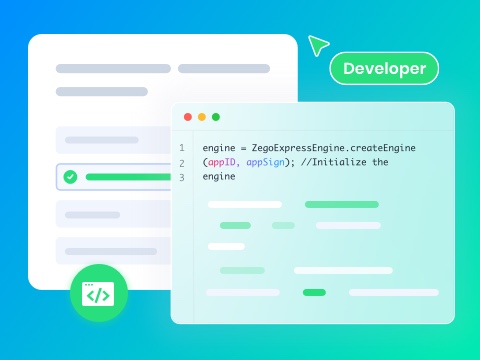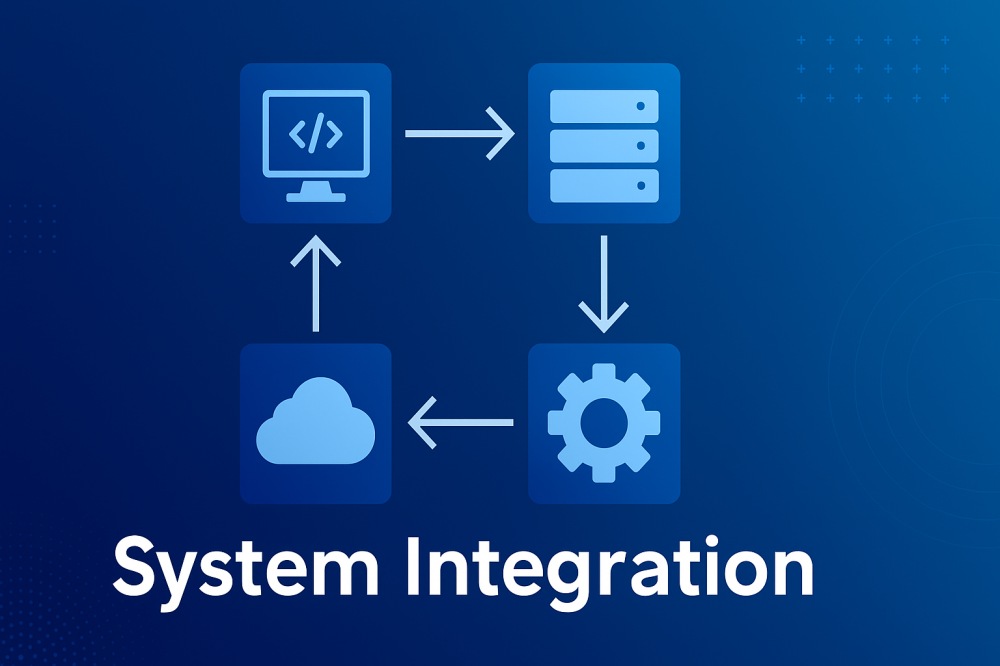In terms of managing intricate operations in the business landscape, enterprises often seek various software solutions and applications. However, many systems often lead to inefficiencies, communication breakdowns, and data silos. System integration becomes necessary to connect numerous apps and software within a business. Therefore, if you want to know why this integration is required and its challenges, review the following article.
What is System Integration?
Basically, system-to-system integration is the ability to connect various applications or components within an organization and let them work together. Through this, hardware devices, software applications, and data sources are merged to ensure clear communication. Later, the main purpose of this integration is to create a smooth flow of information, allowing businesses to boost their productivity.
Furthermore, one can reduce the manual effort, offer better services to the users, and minimize errors via integration. For instance, a firm can combine its customer relationship management with its inventory management to verify sales teams have access to stock levels.
Why Do We Need System Integration?
System integration is essential for organizations seeking to enhance operational efficiency and productivity. Let’s uncover some reasons behind this integration for better understanding.
- Improved Efficiency: When different systems work together, it eliminates the manual efforts for collaboration. This lets employees focus on other tasks instead of focusing on handling each system individually.
- Better Data Accuracy: After integration, data is also automatically shared from one system to another, reducing the chance of human errors. For example, if you coordinate the sales team, both can fetch each other’s data to stay up-to-date.
- Enhanced Collaboration: Once both teams access the data, communication and collaboration become seamless. Hence, when the market team aligns with the sales team, they can easily monitor the strategies and campaigns to boost sales.
- Improved Customer Experience: Moreover, with integrated systems, businesses can efficiently respond to users’ queries by having everything coordinated. For example, a customer service representative can access a customer’s order history and account details to ensure a satisfying consumer experience.
- Cost Savings: Another reason systems should coordinate is that companies can save operational costs in the long run. Though system integration costs at first, once aligned, it removes the possibility of errors and boosts workflow efficiency.
The Most Common Types of System Integration
Since you know the need for system integration services, here are some of their types, letting you decide on one based on your business needs.
1. Data Integration
Starting with data integration, this type of coordination involves combining multiple source data into a single view. This primarily includes databases, apps, and data warehouses to ensure that all departments can access consistent data.
2. Application Integration
Application integration, on the other hand, connects numerous apps, letting them work together to automate tasks. In this, an Application Programming Interface is used, allowing apps to access data and functionality hassle-free.
3. Business Process Integration
For aligning and automating processes across the departments, business process integration plays a significant role. Moreover, it involves workflows that trigger the actions in one system based on the events in other systems.
4. Cloud Integration
We are all familiar with this type of software system integration, which can connect Cloud-based applications and services with others. It lets enterprises take advantage of the Cloud, where they can ensure that all systems operate together effectively.
5. Enterprise Application Integration (EAI)
Enterprise application integration is the most common system unification type, combining enterprise applications into a cohesive unit. In this type of integration, Middleware connects various apps, ensuring smooth and hindrance-free data flow.
6. User Interface Integration
As the name suggests, user interface integration allows various applications to present a unified interface to users. This means that one can access various systems from a single dashboard, eliminating the need to switch between apps.
7. Network Integration
Last but not least, network integration can connect different network resources and systems in the organization. In this, hardware, communication systems, and software are perfectly aligned to verify that they operate coherently.
System Integration Methods
Now that you have opted for a certain kind, this section covers various methods to guarantee system integration into one unit smoothly. From covering middleware integration to point-to-point methods, we’ve uncovered every approach in detail.
1. Point-to-Point Integration
Point-to-point integration is a direct connection generated between two systems or applications. This integration method is simple but can become complex when more systems are added. Moreover, adding more users to this method will require additional coding and maintenance, leading to challenges in managing various connections.
2. Middleware Integration
Unlike other methods of integration, Middleware is software that acts as a bridge between systems to communicate and share data. This method can easily handle message queuing, data transformation, and service orchestration to align complex systems. Hence, leveraging all these traits, this method of unification is highly scalable compared to point-to-point.
3. API-Based Integration
Application Programming Interface, also known as API, is another method of system integration that uses APIs to align the systems. These APIs can enable hassle-free data transformation between various systems and applications. Thus, this method is popular among others due to its flexibility and ability to integrate with cloud-based or on-premises apps.
4. Enterprise Service Bus
Finally, an Enterprise Service Bus is a centralized messaging system that offers standardized ways to unify the systems. With this, systems and applications can quickly move data from one app to another, eliminating the need for a direct connection. Therefore, using this method, one can improve the scalability, maintainability, and flexibility of applications to boost tier users’ experience.
System Integration vs Data Integration
Do you seek to explore data and system integration in detail? System Integration and Data Integration are two important concepts in the realm of information technology, but they serve different purposes and involve distinct processes. Here is the comprehensive table, offering easily detailed information regarding both terms for enhanced clarity.
| Aspect | System Integration | Data Integration |
|---|---|---|
| Definition | System integration is the process of connecting different systems and applications to work together seamlessly. | On the contrary, data integration is about combining data from different sources into a unified view for analysis or reporting. |
| Focus | Emphasizes the interconnectivity of systems and applications. | Focus on the consolidation and consistency of data. |
| Purpose | To ensure that various applications can communicate and function together effectively. | Its main aim is to provide a unified and accurate representation of data from multiple sources. |
| Components | It involves hardware, software applications, APIs, and networking components. | Data includes integration databases, warehouses, lakes, and ETL tools. |
| Complexity | Generally, it involves more complex architecture due to the need for different systems to work together. | It can vary in complexity depending on the number of data sources and the transformations needed. |
| Techniques | System-to-system integration may use Middleware, service-oriented architecture, or microservices for connection. | Often employs data transformation tools, data cleansing, and data mapping techniques. |
| Outcome | It results in a cohesive ecosystem where applications can share functionality and workflows. | Results in a single, accurate view of data that can be used for reporting and analysis. |
| Real-Time Processing | Often supports real-time interactions between systems, enabling immediate data exchange. | It may involve batch processing or real-time data synchronization, depending on requirements. |
| Challenges | Challenges include managing interoperability, maintaining system performance, and handling legacy systems. | It includes ensuring data quality, dealing with different data formats, and synchronizing data across sources. |
| Security | Focuses on securing the connections between systems, managing user access, and ensuring data flow integrity. | Data integration focuses on privacy, compliance, and protecting sensitive information during data transfer and storage. |
System Integration Challenges
As you’ve gathered details about software system integration, learn about particular challenges that affect data sharing. This section covers certain obstacles in detail so you can resolve them whenever you face any.
1. Complexity of Integrating Different Systems
Integrating various systems, technologies, platforms, and data formats can be challenging, especially for beginners. Therefore, users often get baffled while ensuring each system coordinates and communicates effectively without data loss or errors.
2. Data Security and Privacy Concerns
Sometimes, sharing data from one platform to another can also pose security concerns, leading to data breaches. Thus, to verify safe transferring, developers have to use GDPR, which is a significant challenge as it requires access control mechanisms.
3. High Costs and Time Requirements
During system integration, enterprises also have to pay a lot for custom integration, testing, and ongoing maintenance. More importantly, legacy systems in the application of system connectivity require specialized expertise.
4. Maintaining System Performance
Usually, integrated systems also face the issue of slower data processing and system downtime, affecting the workflow. Therefore, businesses have to ensure that the apps or systems function smoothly, eliminating the issue of delays and regular monitoring.
5. Change Management and User Adoption
For some reason, if the integrated system faces continuous performance issues, enterprises might be required to update them. Hence, these innovations in integrated networks are often resisted by the employees since they need proper change management strategies.
What is a System Integrator?
Other than knowing what is system integration, users often wonder about the utility of the system integrators for this purpose. While learning about this technology, it’s a technical expert who specializes in bringing various technology systems into one cohesive solution. In addition, the main aim of an integrator is to ensure that various systems communicate and work together effectively.
These integrators play a significant role in streamlining operations for enterprises by reducing manual effort. In addition to ensuring strong and smooth system operation, they ensure that new technologies or systems easily integrate into existing ones. Hence, once verified that all the apps and systems are running smoothly, system integrators aid companies in saving time and effort and improving productivity.
System Integration with ZEGOCLOUD
If you, as a business owner, desire to improve software system integration, ZEGOCLOUD offers powerful APIs and SDKs. Using these innovative real-time communication APIs, you can easily enable communication features to make data sharing seamless. By incorporating a voice call API, users can enjoy 48kHz full-band audio sampling to get a distortion-free experience in their system integrator.

Besides voice call API, it also features live video call SDK, letting sales and marketing teams collaborate smoothly to discuss campaigns. Moreover, you are advised to use its recording features, which enable you to record the calls for future reference. Developers can even add a screen-sharing feature in their system integration application to make collaboration even easier.
To make communication seamless, it supports a wide range of in-app chat features where teams can monitor each other’s login status to check their availability. Not only that, but it also makes use of its push notification feature to let others notify them about important notifications if they are offline. More importantly, if the system integrator ensures a robust connection, this SDK enables you to share files from one app to another.
Conclusion
In a nutshell, system integration services let you connect more than one app or system for improved communication and collaboration. Therefore, this article has explored every possible aspect of system integration, allowing you to manage data hassle-free. In addition, you’ve learned now how ZEGOCLOUD can improve your system-to-system integration with its extensive library of APIs and SDKs.
Read more:
FAQ
Q1: What do you mean by system integration?
System integration is the process of connecting different software and hardware systems so they work together as one unified solution. It allows data to flow seamlessly between platforms, improving efficiency and reducing manual work.
Q2: What is hardware system integration?
Hardware system integration involves connecting physical components such as sensors, servers, and devices into a single system. It ensures that all hardware parts communicate effectively to support the software and overall system functions.
Q3: What is an example of an integrated system?
A good example is a smart home system where lighting, security cameras, and thermostats all connect to a single mobile app. This allows users to control everything from one place.
Q4: What are the three types of system integration?
The three main types are horizontal integration (connecting subsystems through a common interface), vertical integration (linking systems at different functional levels), and star integration (directly connecting each system to all others).
Let’s Build APP Together
Start building with real-time video, voice & chat SDK for apps today!










